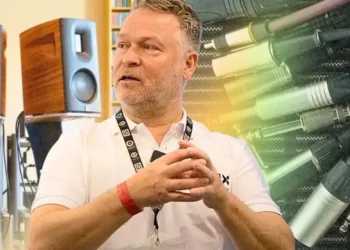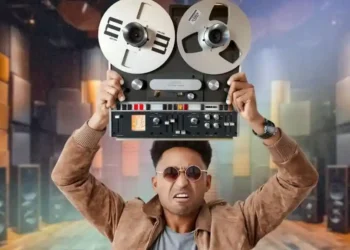Published: October 17, 2025, 21:40 EDT
The evolution of recorded music has spanned over a century, transforming from analog warmth to digital precision. Yet, as streaming dominates today’s landscape, many audiophiles are calling for a return to physical formats they believe offered a richer, more personal experience. Thousands of enthusiasts recently shared which “forgotten” formats they want to see revived — and why their legacy still resonates in the digital age.
MiniDisc: Compact Innovation That Arrived Too Early
Sony’s MiniDisc, introduced in 1992, was designed to merge the clarity of CDs with the portability of cassettes. Each disc held 60–80 minutes of near-CD-quality sound using ATRAC compression and came encased in a durable shell that made it nearly skip-proof. It was editable, rewritable, and durable — traits unmatched by any portable medium of its time.
Despite its technical brilliance, the MiniDisc never gained traction in the U.S. market. The iPod’s arrival in 2001 and the rise of MP3s made physical recording formats feel obsolete. However, audiophiles cherish its nostalgia, tactile charm, and the distinct “clean warmth” of ATRAC compression. Many believe it still has potential if reimagined with modern storage capacities.
Compact Cassette: The Heartbeat of a Generation
Introduced by Philips in 1963, the compact cassette became the world’s most beloved format for portable music. By the 1970s and 1980s, the Walkman made personal listening a cultural phenomenon. Listeners could record, rewind, and share — often crafting mixtapes that expressed emotions words couldn’t.
Though sound quality lagged behind vinyl and CD, advances like Type II chrome tapes and Dolby noise reduction made cassettes a legitimate hi-fi medium. Their decline began with the CD revolution and ended with the last factory car cassette decks around 2011. For collectors today, tapes represent not just a sound but a feeling — hands-on, imperfect, and deeply personal.
Reel-to-Reel Tape: The Studio Standard for Purists
Before digital recording, reel-to-reel defined professional sound. From the 1940s through the 1980s, it was the studio medium of choice for its unmatched fidelity. Wide ¼-inch tape, fast speeds, and analog saturation produced recordings with warmth and realism that remain hard to replicate.
Audiophiles praise its “creamy” tone and dynamic range, describing it as the pinnacle of analog listening. Modern manufacturers like Ballfinger and Metaxas & Sins still produce reel decks for enthusiasts willing to handle the bulk and maintenance. It’s a format for listeners who value ritual as much as sound.
Super Audio CD: High-Resolution Clarity Lost to Timing
In 1999, Sony and Philips introduced the Super Audio CD (SACD), promising an evolution beyond the standard CD. Its Direct Stream Digital (DSD) encoding achieved incredible clarity, supporting both stereo and 5.1 surround sound.
However, the format’s battle with DVD-Audio and the growing appeal of MP3 players hindered widespread adoption. Today, SACD remains a cult favorite among audiophiles who crave its detail, uncompressed sound, and access to rare remastered classics.
Compact Disc: The Digital Revolution That Still Endures
Launched in 1982, the compact disc (CD) revolutionized how music was heard and stored. With 16-bit/44.1 kHz PCM audio, it offered a level of clarity and durability unseen in previous decades. Its ability to deliver thousands of flawless plays without degradation secured its dominance by the 1990s.
Even as streaming services eclipse physical ownership, many collectors remain loyal. They cite better mastering quality on early releases, permanent ownership unaffected by licensing, and the joy of browsing liner notes — something streaming can’t replicate.
Digital Audio Tape: Professional-Grade Sound in Miniature
Sony’s Digital Audio Tape (DAT), introduced in 1987, was compact yet capable of studio-quality recording. It became the standard for field recording, live taping, and professional archiving through the 1990s.
Though it never gained consumer traction due to high prices and copy-protection rules, DAT remains a key archival medium. Enthusiasts admire its bit-perfect recordings and nostalgia for an era when digital still felt mechanical and precise.
8-Track Cartridge: The Iconic Sound of the 1970s
The 8-track cartridge, launched in the mid-1960s, defined in-car entertainment for over a decade. With continuous play and a distinctive mechanical “ka-THUNK” between tracks, it became a symbol of American road culture.
Collectors today embrace 8-tracks for their nostalgic charm and colorful designs. Though fragile and outdated, their tactile novelty continues to inspire limited-edition reissues.
78 RPM Shellac Records: The Birth of Recorded Sound
Before vinyl, the world listened on shellac 78 RPM discs. These records, spinning at high speeds, captured the earliest jazz, blues, and classical performances from the early 20th century.
While their sound range was limited, well-preserved 78s can still deliver astonishing realism. For historians and collectors, they are not just music carriers — they are time capsules of cultural heritage.
Elcaset: Sony’s Ambitious But Overlooked Format
In 1976, Sony introduced the Elcaset — a hybrid between reel-to-reel and cassette. Twice the size of standard tapes, it delivered high-fidelity analog audio with remarkable stability. Yet its bulky design and poor timing doomed it to obscurity.
Despite failure, Elcaset remains a technical marvel revered by collectors as “the ultimate what-if” in audio history.
Digital Compact Cassette: A Smart Bridge Between Eras
Philips’ Digital Compact Cassette (DCC), launched in 1992, aimed to merge analog and digital playback in one. It could record digital audio while playing traditional cassettes, offering convenience and backward compatibility.
However, Sony’s MiniDisc overshadowed it, and by the mid-1990s, the world had already moved to CDs. Today, the DCC’s cult following continues through enthusiasts and museums preserving its legacy.
DVD-Audio and Blu-ray Audio: The Unfulfilled Promise of High-Resolution Discs
DVD-Audio, launched in 2000, and later Blu-ray Audio in 2013, promised studio-quality sound in multichannel formats. Both offered lossless audio and immersive experiences unavailable on streaming platforms.
Despite their technical superiority, neither achieved mass adoption. The arrival of digital streaming rendered physical high-res formats niche products, appealing mostly to serious audiophiles.
LaserDisc: A Visual and Sonic Collector’s Dream
Though primarily a video format, the LaserDisc delivered uncompressed PCM soundtracks decades ahead of its time. Audiophiles still seek them for concert recordings with richer mixes than later DVD releases.
While bulky and impractical, LaserDiscs remain prized for their packaging and analog warmth — a bridge between cinema and sound in the pre-digital era.
The Resurgence of Retro Listening
The renewed fascination with old formats reflects more than nostalgia. In an era dominated by streaming algorithms and cloud music, physical formats offer something tangible — ownership, ritual, and a deeper connection to sound.
Collectors argue that reviving forgotten formats isn’t just about sentimentality; it’s about preserving craftsmanship and rediscovering how people once listened — intentionally and with patience.
This article was rewritten by JournosNews.com based on verified reporting from trusted sources. The content has been independently reviewed, fact-checked, and edited for accuracy, neutrality, tone, and global readability in accordance with Google News and AdSense standards.
All opinions, quotes, or statements from contributors, experts, or sourced organizations do not necessarily reflect the views of JournosNews.com. JournosNews.com maintains full editorial independence from any external funders, sponsors, or organizations.
Stay informed with JournosNews.com — your trusted source for verified global reporting and in-depth analysis. Follow us on Google News, BlueSky, and X for real-time updates.













